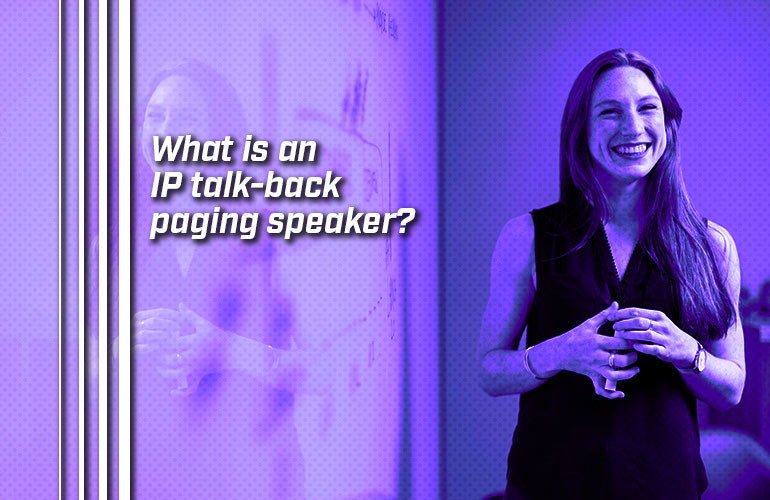IP Paging Speakers come in many shapes and sizes with many terms attached to them. It can be confusing.
One question people ask: What do paging equipment manufacturers like CyberData, Grandstream, Valcom, or Viking Electronics mean when they say that an IP paging speaker is a “talk-back” speaker?
Let’s explain.

What is a talk-back speaker?
In the world of paging speakers, “talk-back” means that the speaker supports two-way (or duplex) audio.
When you think of a standard paging speaker, you might think of one in a school that lets students know when recess is starting (yay!) or when recess is ending (boo!). The audio is always being broadcasted, which means it’s always going one-way.
A talk-back speaker is like an intercom: the audio goes both ways.
Some IP talk-back speakers, like Grandstream GSC3516, have advanced microphones built-in. GSC3516 has three microphones with Multichannel Microphone Array Design, plus a single auxiliary microphone. Using all these, it offers about 13.7 feet in voice pickup range.

How do you place a call using an IP talk-back paging speaker?
Viking 40TB-IP gives you one very convenient method. This speaker supports the Viking BT-3 Bluetooth Remote. Using the remote, you can initiate a two-way call on the speaker.
Similarly, CyberData 011394 is an IP talk-back speaker that works with the CyberData 011508 Remote Call Button. The button gives the user a simple, stable method of initiating a call. You can think of the two devices working in concert to create an intercom-like experience.
In this blog, we’ve focused on IP talk-back speakers, which is to say, paging speakers that connect to an IP paging system or IP phone system through the IP network. There are analog talk-back speakers, as well.
If you’d like to know more about the difference between IP paging speakers and analog paging speakers, check out our clear, detailed Paging Systems Buyer’s Guide.

